

Royal Mile
Photos taken in August 2011
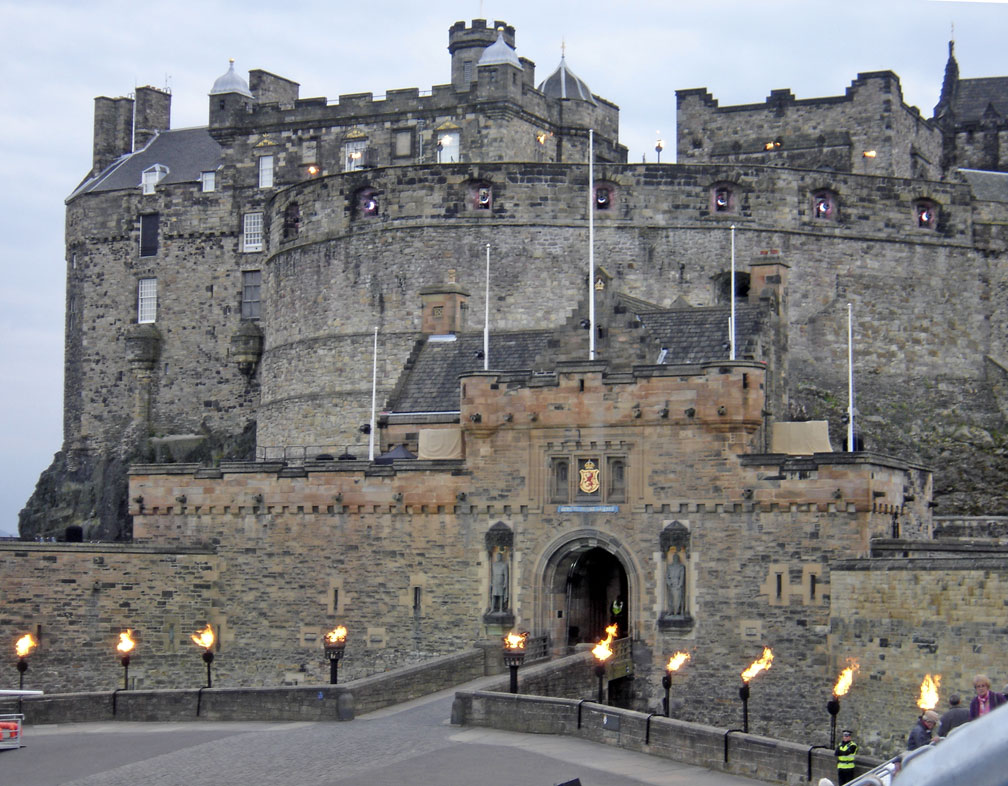
Edinburgh Castle
The Royal Mile is a succession of streets which form the main thoroughfare of the Old Town of the city of Edinburgh in Scotland.
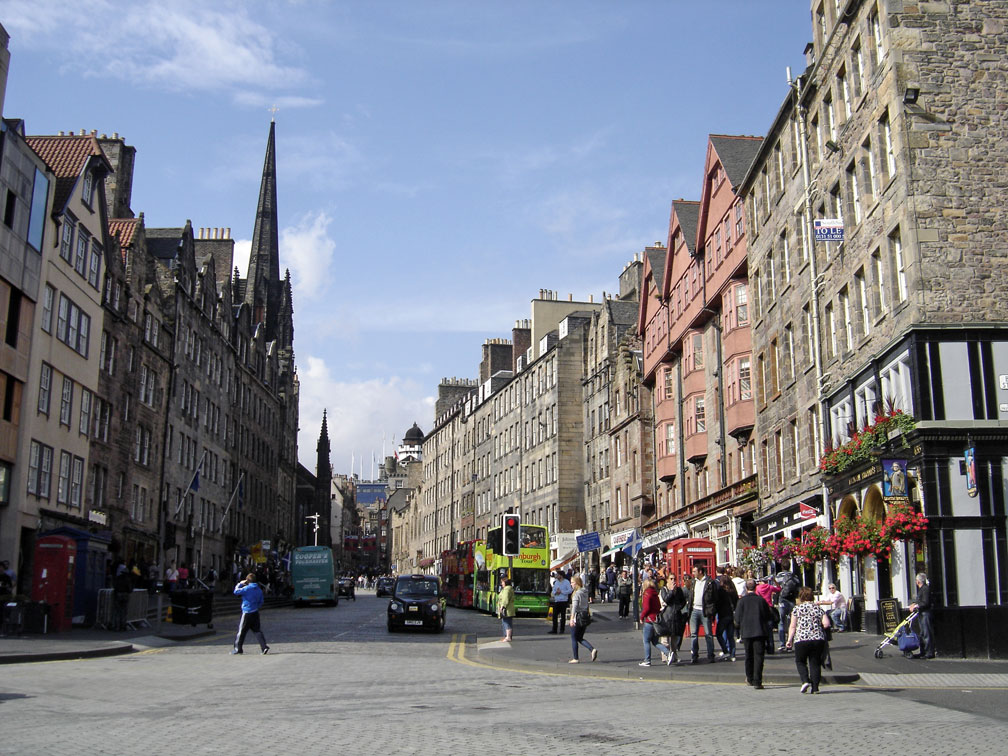
As the name suggests, the Royal Mile is approximately one Scots mile long, and
runs between two foci of history in Scotland, from Edinburgh Castle at the top
of the Castle Rock down to Holyrood Abbey. The streets which make up the Royal
Mile are (west to east) Castle Esplanade, Castlehill, Lawnmarket, High Street,
Canongate and Abbey Strand. The Royal Mile is Edinburgh Old Town's busiest
tourist street, rivalled only by Princes Street in the New Town.
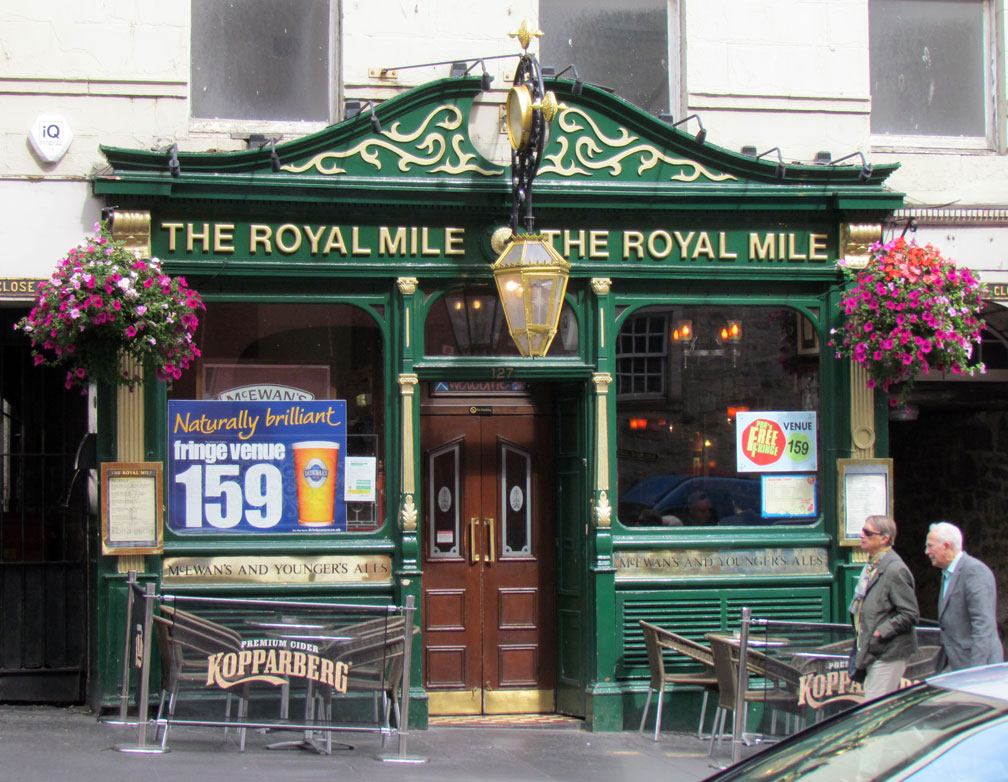
The Royal Mile

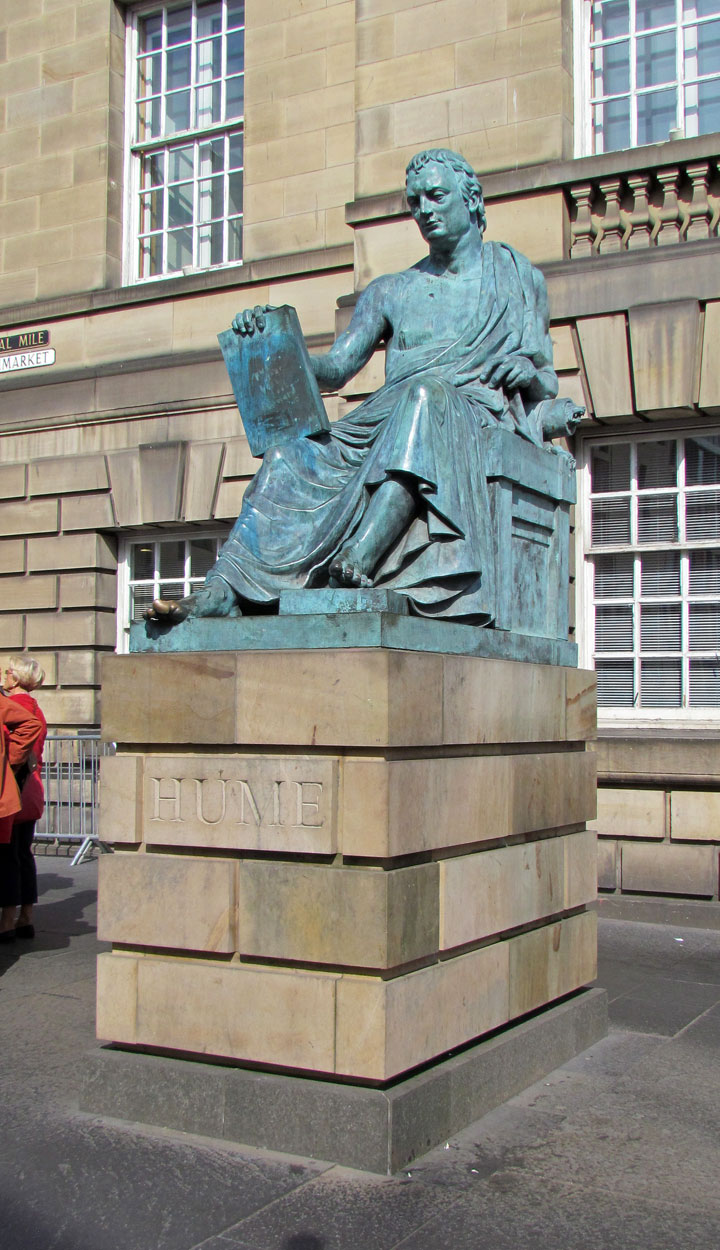
Retreating ice sheets, many millennia ago, deposited their glacial debris behind
the hard volcanic plug that is Castle Rock (which Edinburgh Castle sits upon),
resulting in a distinctive crag and tail feature. Extending in an eastwards
direction, the Royal Mile sits upon the spine of this crag and tail trailing
gently down from the Castle to the Palace of Holyroodhouse.
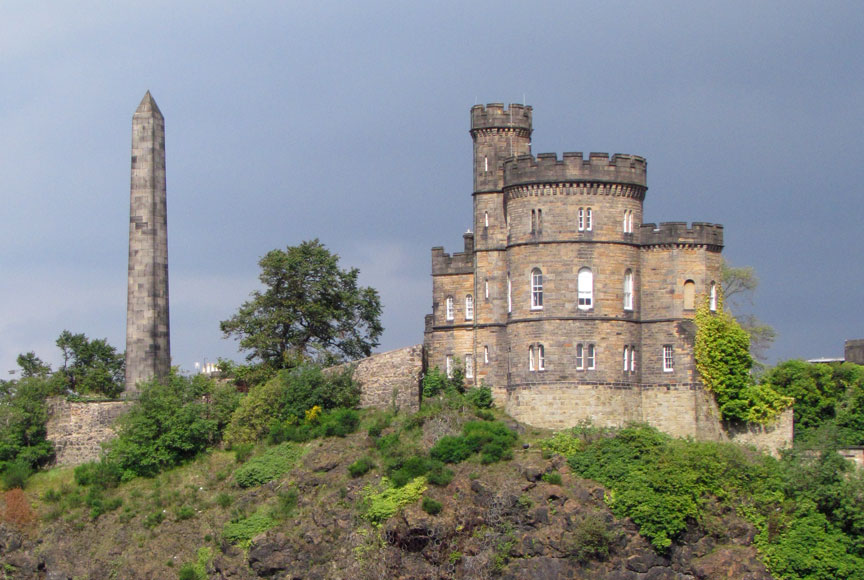
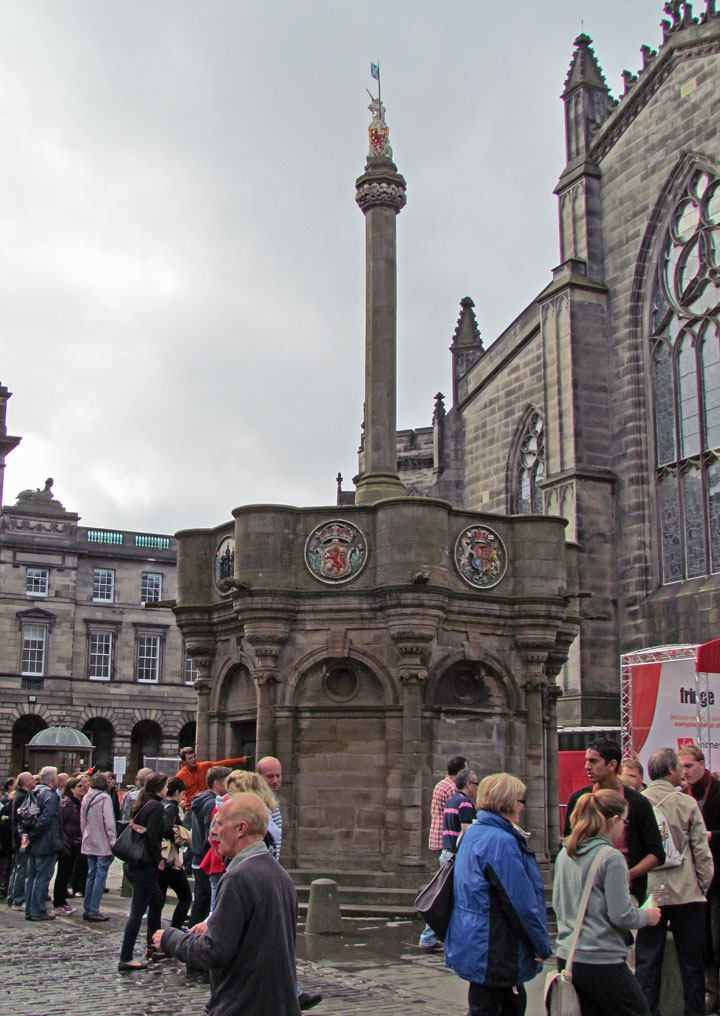
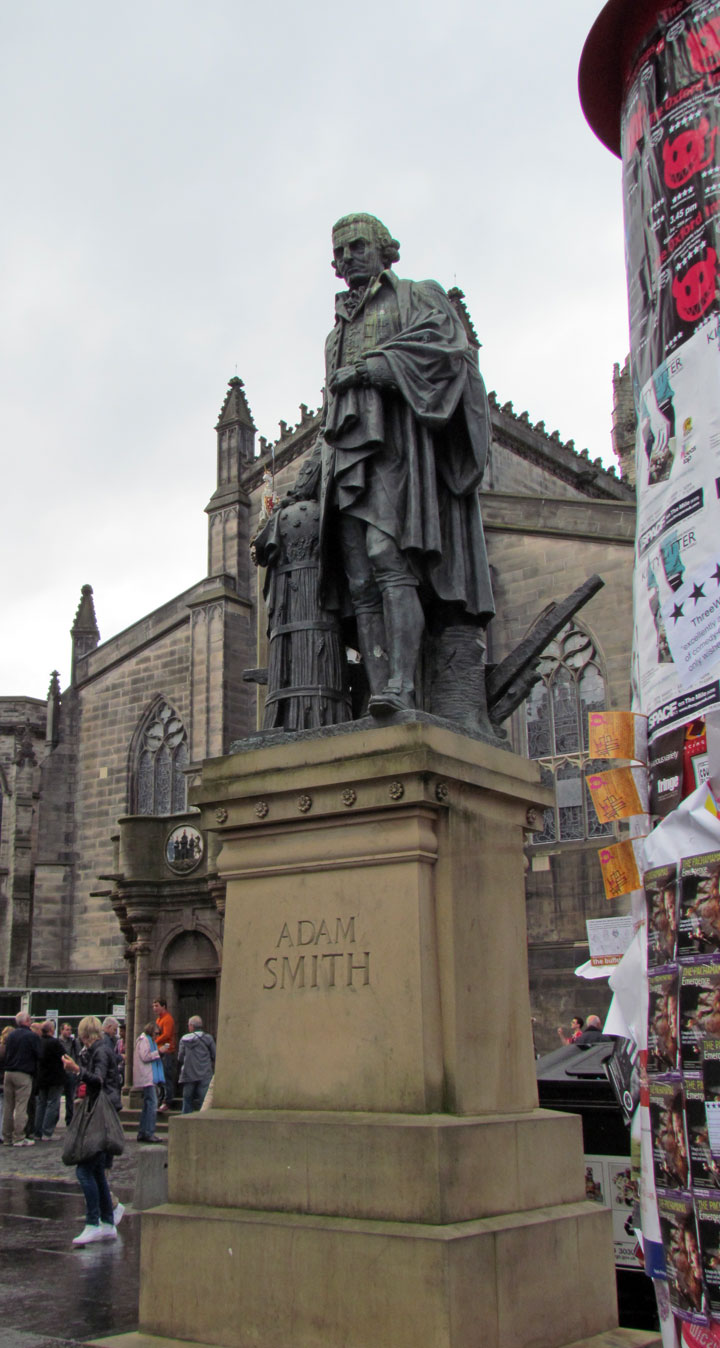
Steep closes (or alleyways) run between the many tall lands (or tenement buildings) off the main thoroughfare.
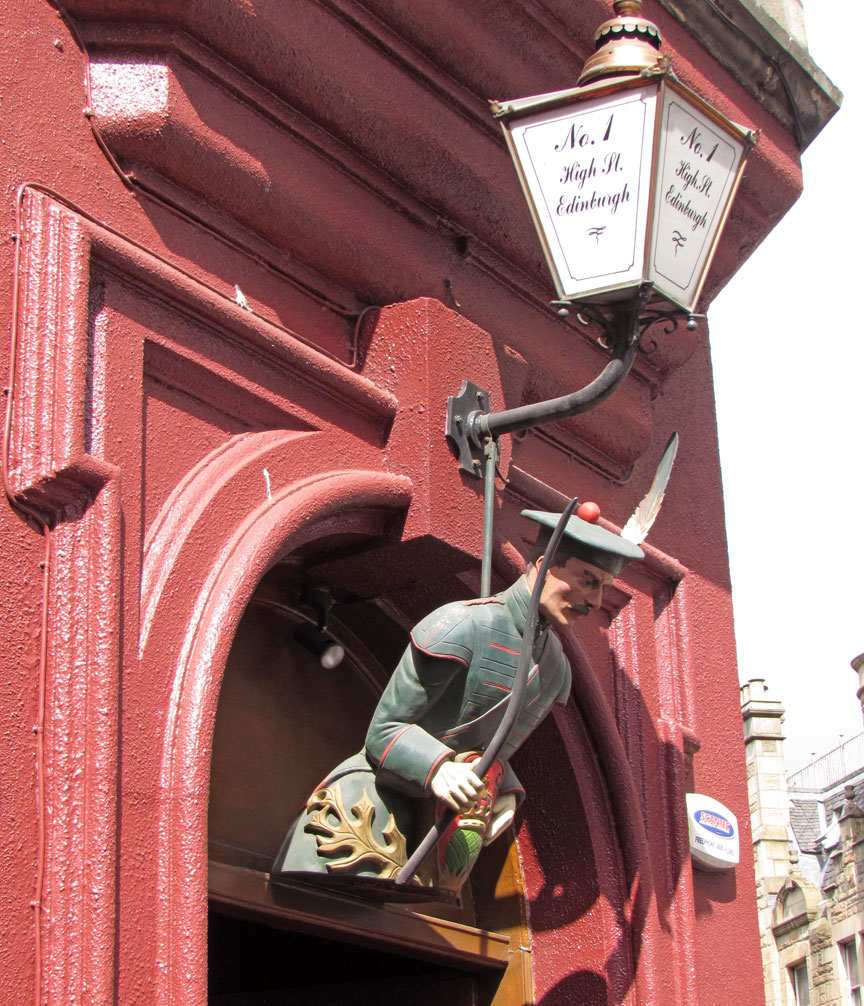
The Royal Mile, Edinburgh. In the centre is The Hub with its characteristic
spires, housing the Edinburgh International Festival. On the right is The Scotch
Whisky Experience. On the Left is the Camera Obscura and additional shops.
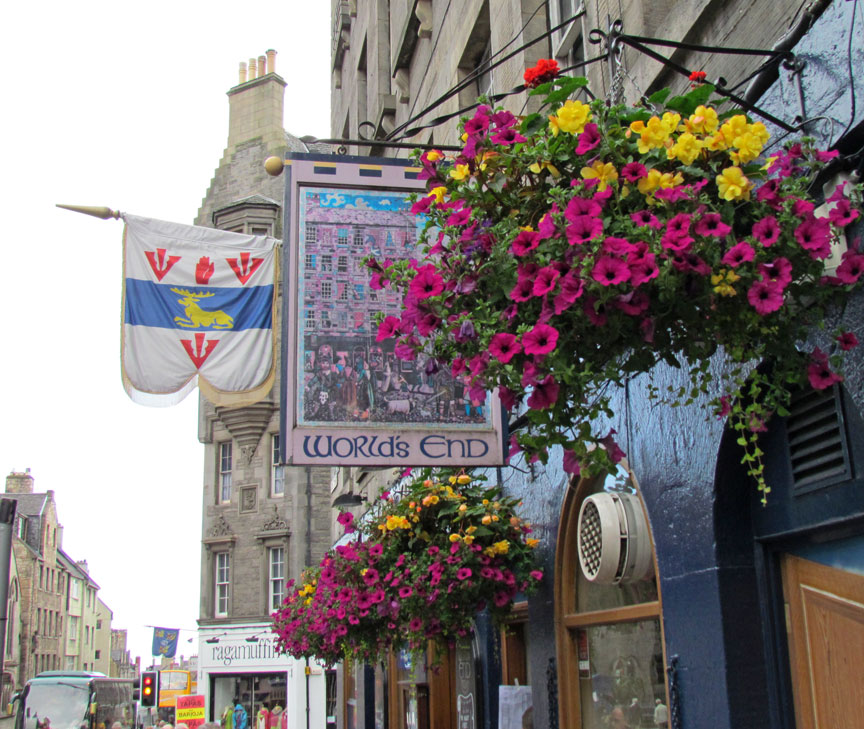
The Castle Esplanade was laid out in the 19th century primarily as a parade
ground for troops. It is the venue of the annual
Edinburgh Military Tattoo.
Cannonball House is notable for a cannonball lodged in the wall, said to have
been accidentally fired from the Castle.
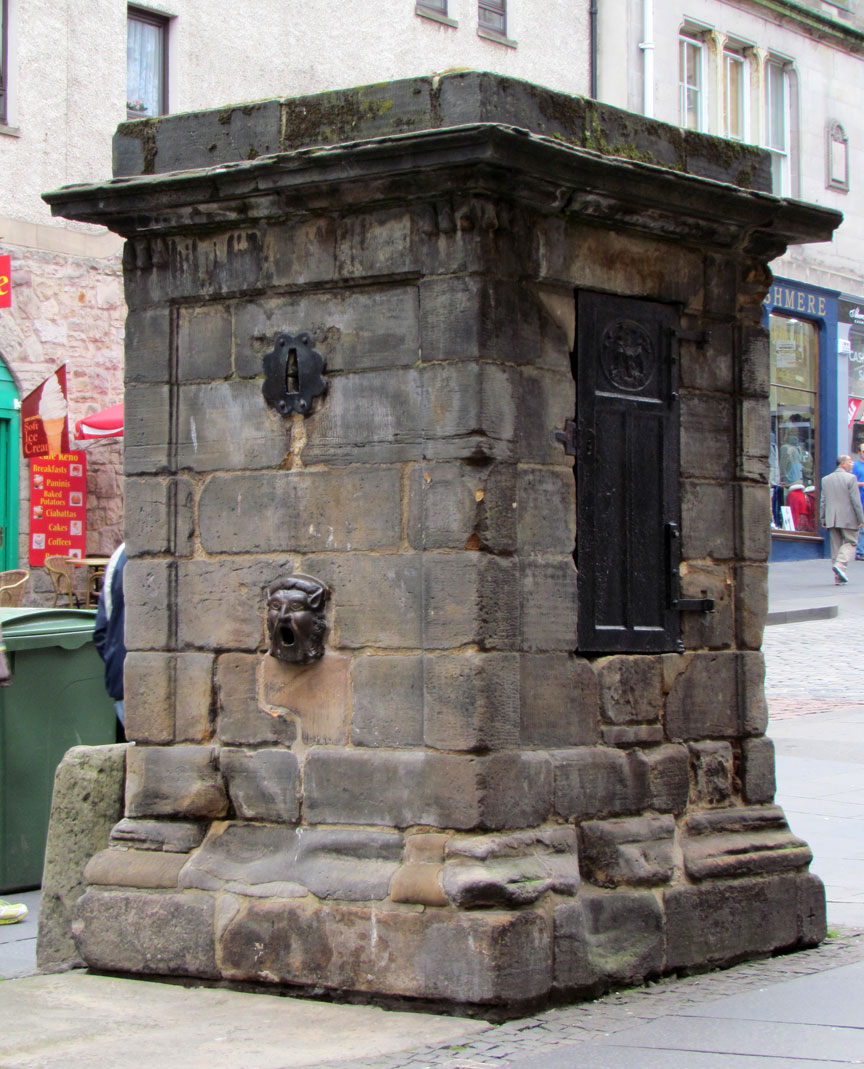
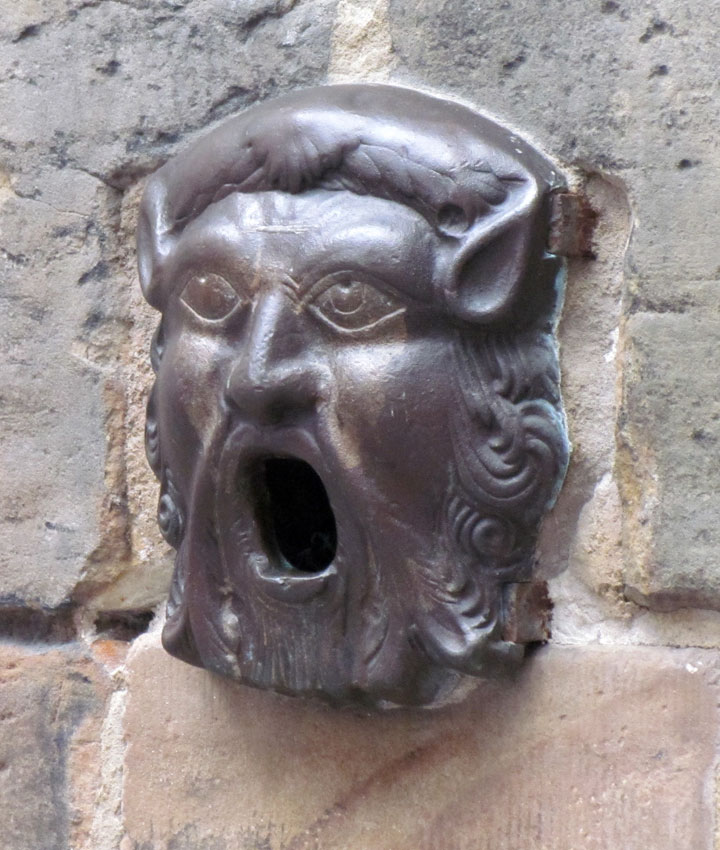
From the Castle Esplanade, the short section of the road entitled Castlehill is
dominated by the former Tolbooth Highland St John's Church (on the south side at
the foot of this section), now the headquarters of the Edinburgh International
Festival society - The Hub, and on the north side by the Camera Obscura & World
of Illusions, one of the oldest tourist attractions in the city after the Scott
Monument. The Assembly Hall of the Church of Scotland and New College are
further down on the same side, in a somewhat understated building as seen from
this side. The Scottish Parliament met in the Assembly Hall between 1999 and
2004, with a public access from Mylne's Court.

The Lawnmarket, which was the linen market, is dominated by tourist-oriented
shops. On the left is the preserved 17th century townhouse Gladstone's Land
owned by the National Trust for Scotland. The south side has a strong Dutch
influence in its 17th century gables. The bottom of the Lawnmarket is marked by
a major intersection with George IV Bridge on the right (south) and Bank Street
on the left, leading to The Mound and the New Town. The view down Bank Street is
dominated by the baroque headquarters of the Bank of Scotland.
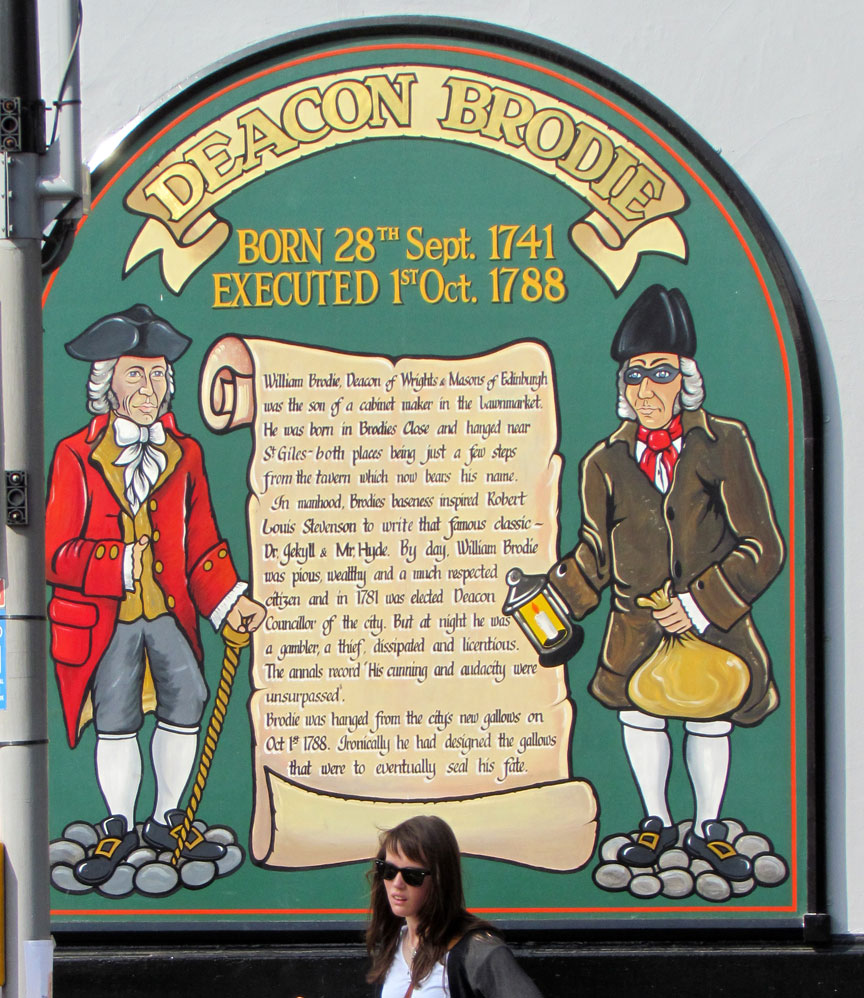
Deacon Brodie
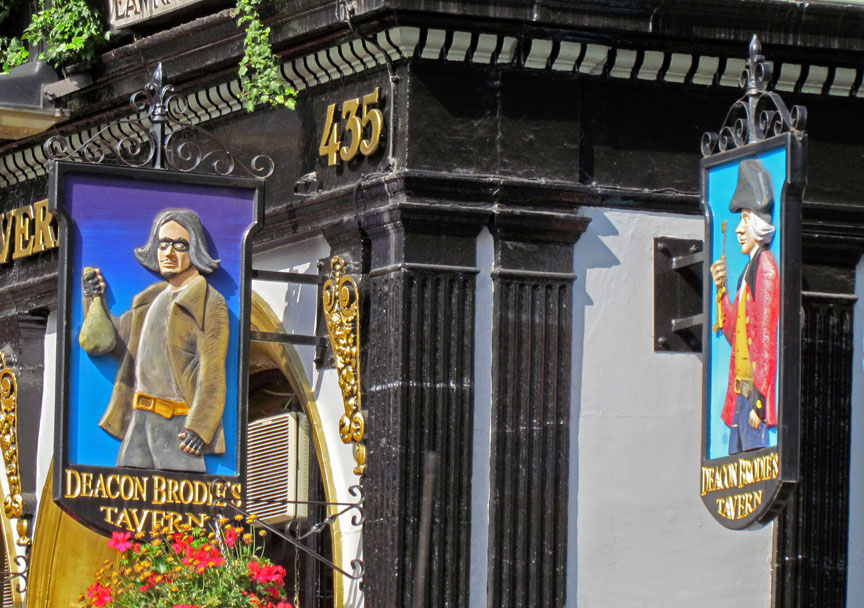
Brodie at night (left) - Brodie by day (right)
On the south side of the Lawnmarket is a new hotel, replacing the former Lothian Regional Council offices. This building is of controversial design winning both best building awards and "carbuncle" awards in 2009/10.
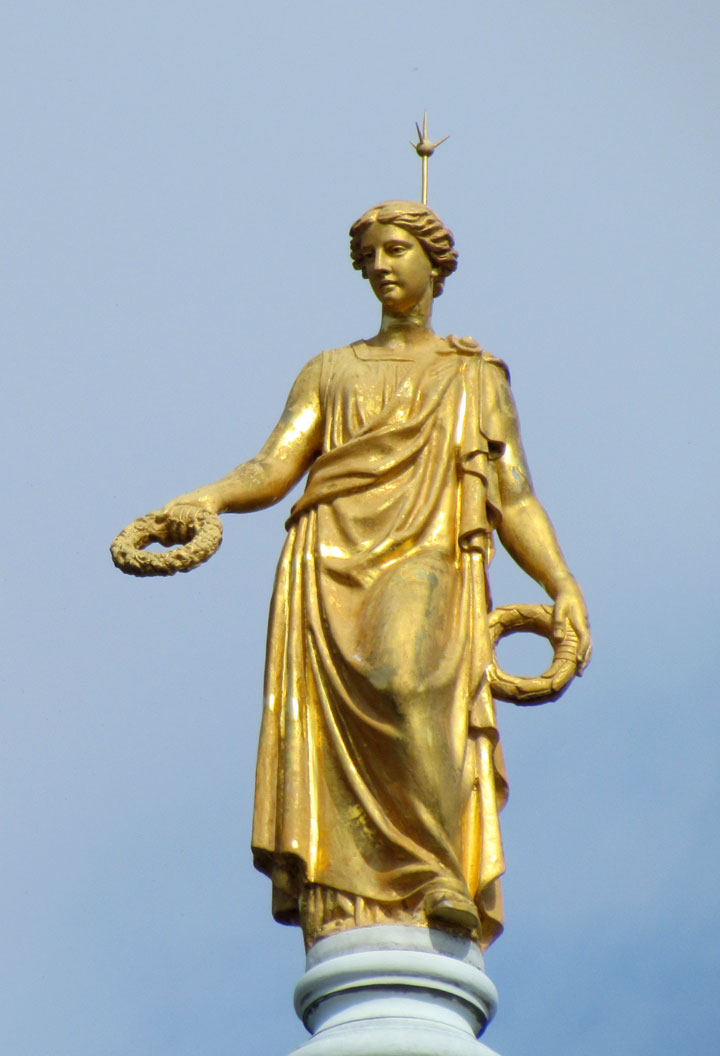
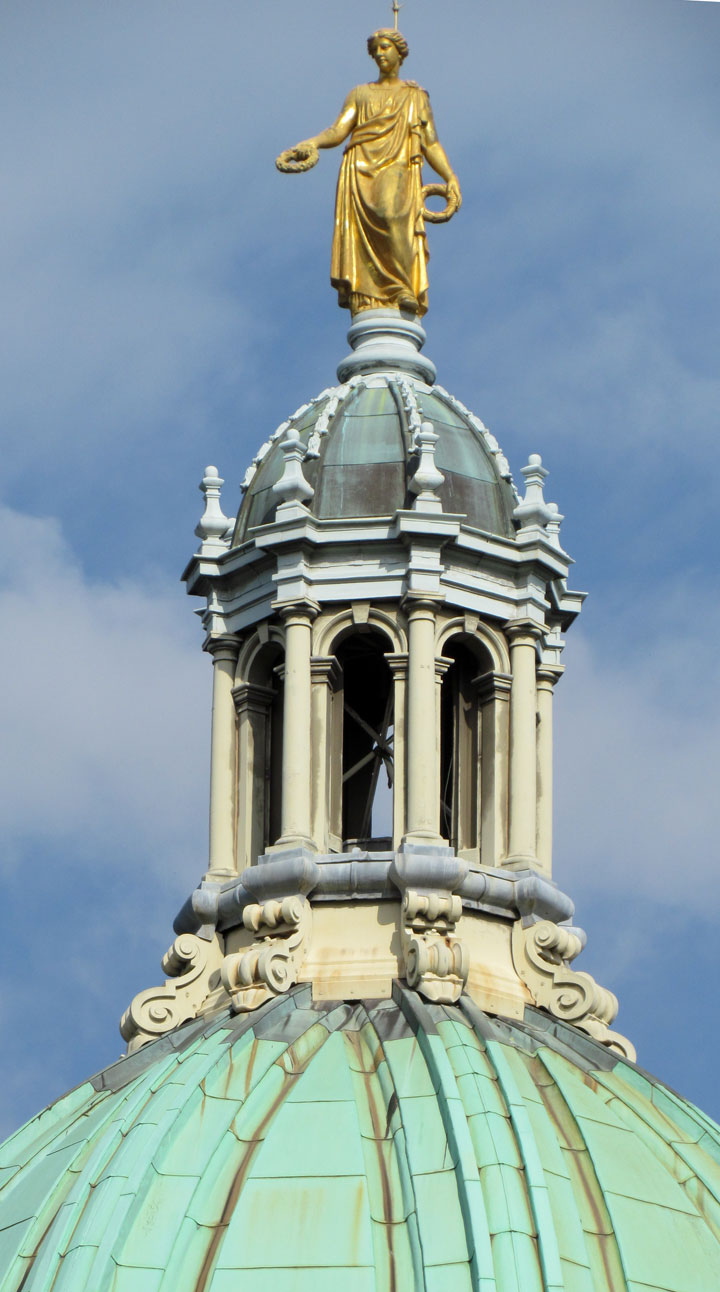
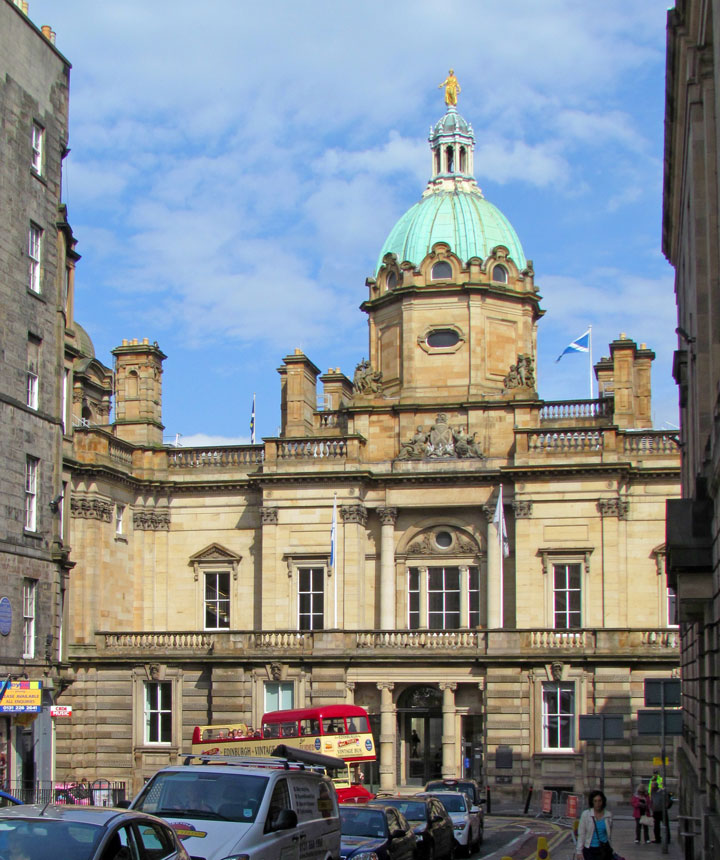
During the annual Edinburgh Festival, the High Street becomes the city's central
focus, and is crowded with tourists, entertainers and buskers. On the left is
the High Court of Justiciary, Scotland's supreme criminal court. On the right,
about one-third of the way down from the Castle toward the Palace is Parliament
Square, named after the old Parliament House which housed both the law courts
and the old Parliament of Scotland between the 1630s and 1707 (when it was
adjourned by the Act of Union) Parliament House is now the home of the Court of
Session, Scotland's supreme civil court. St Giles' Cathedral, the High Kirk of
Edinburgh, also stands in Parliament Square.
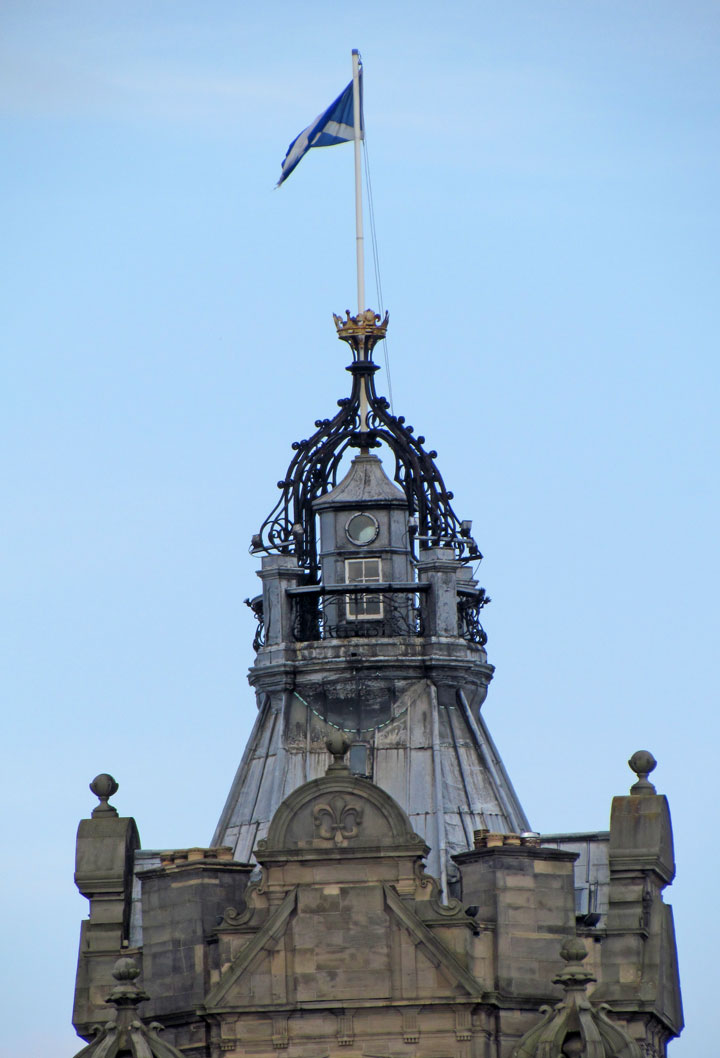
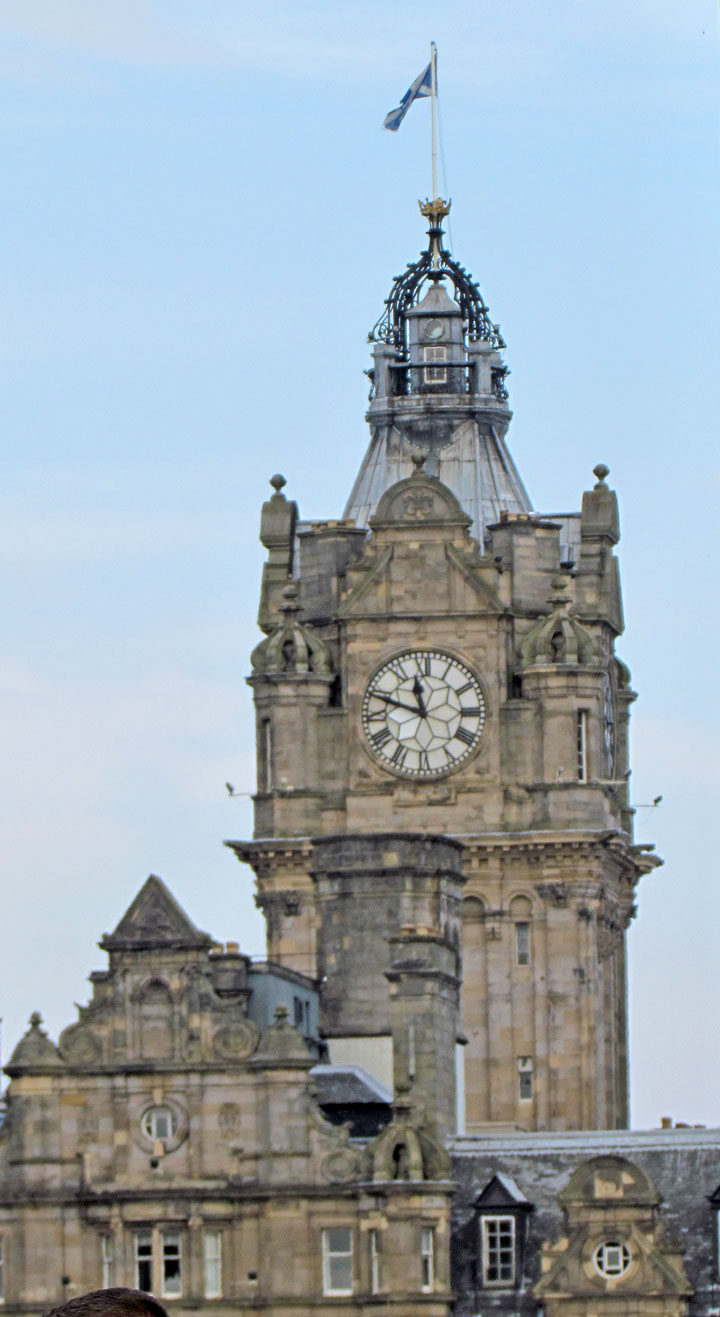


By the West Door of St Giles' is the Heart of Midlothian, a heart-shaped pattern
built into the setted road, marking the site of the former Tolbooth (prison).
From the point of its demolition, locals used to spit on the site of the prison.
The prison had been described by Sir Walter Scott as the "Heart of Midlothian",
and soon after demolition it occurred to the city fathers to place a heart on
the site. Locals still spit on the Heart (aiming very specifically for the
centre). The legend has been "cleaned up" by tourist guides who claim the
spitting is for good luck, but it is really the same as it was, a good
old-fashioned disrespect for authority. On the left, opposite St Giles', is
Edinburgh City Chambers, where the City of Edinburgh Council meets. On the
right, just past the High Kirk, is the Mercat Cross from which royal
proclamations are read, and election results announced.


passage from the Royal Mile

Dunbar's Close Garden



The central focus of the Royal Mile is a major intersection with The Bridges. North Bridge runs left (north) to the New Town's Princes Street across Waverley station. To the right South Bridge (which appears from above to be simply a road with shops on either side: and even from below, only one arch is visible) spans across the Cowgate, a street many storeys below, and continues as Nicolson Street past the Old College building of the University of Edinburgh.

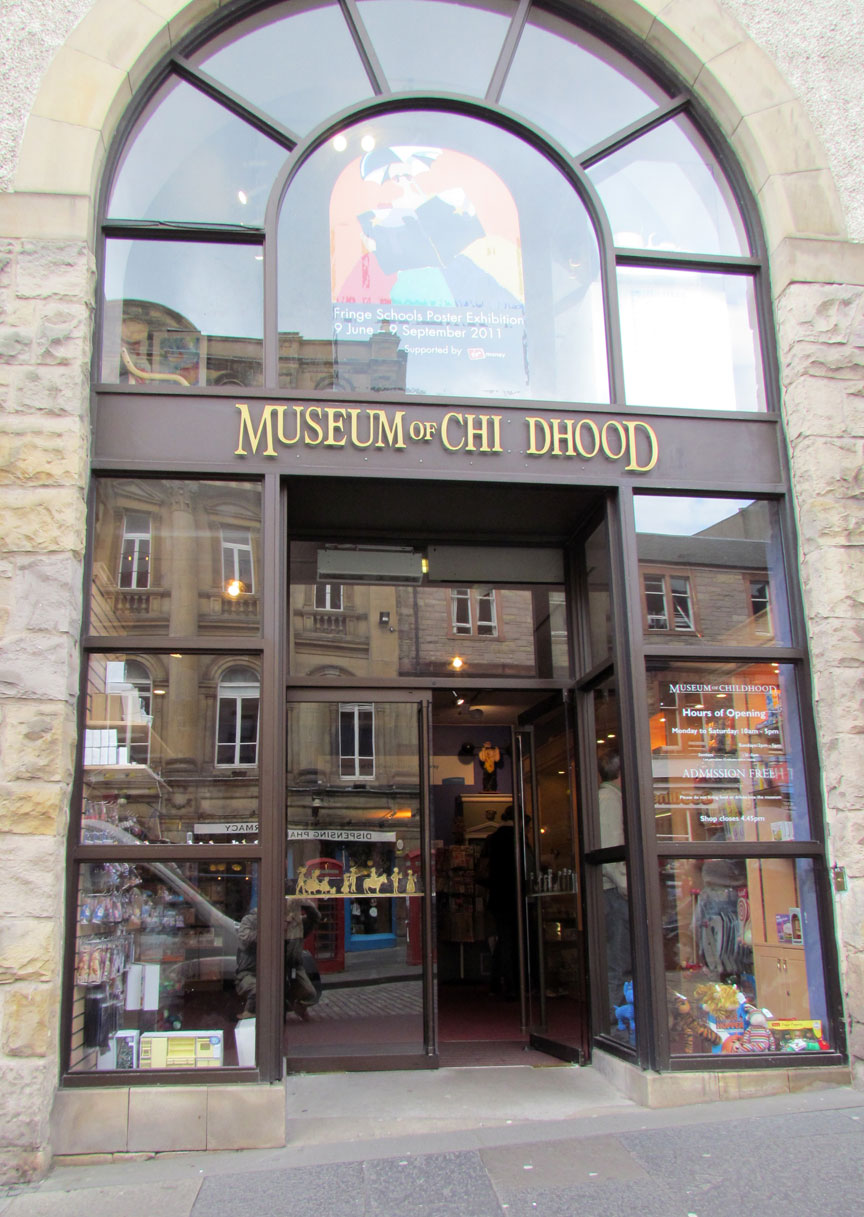

Between The Bridges and John Knox House is one of the only remaining buildings
on the Royal Mile that is still used for the same purpose for which it was built
- Carrubbers Christian Centre. Built in 1883 to house the Carrubbers Close
Mission, the building at the heart of the Royal Mile is home to a lively church.

John Knox House
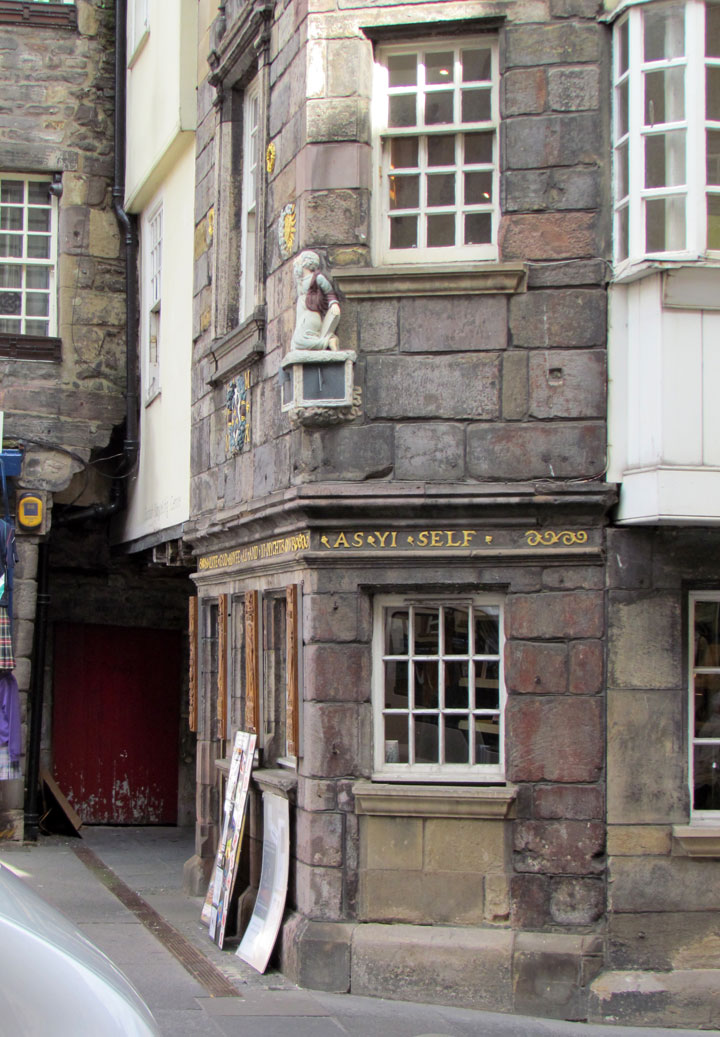
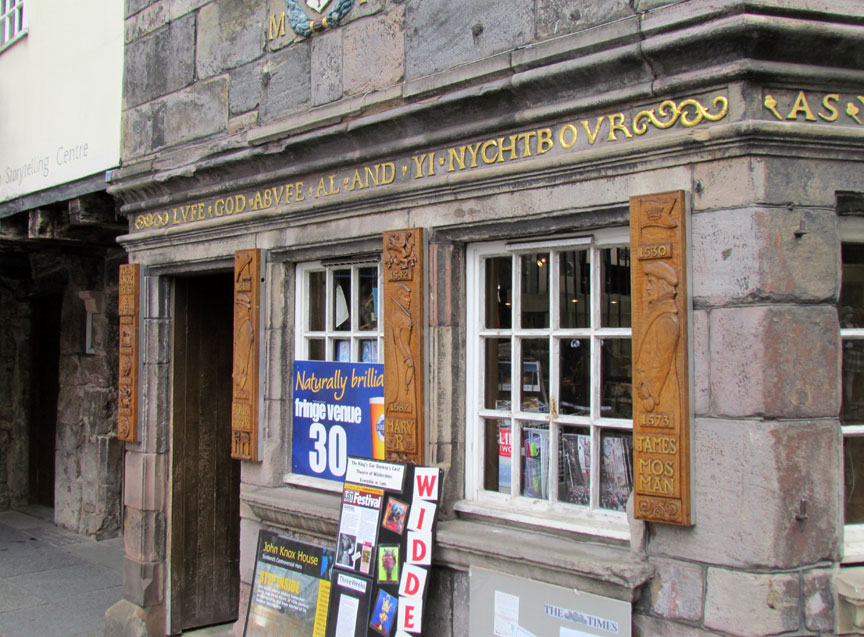

John Knox's House

After John Knox's House the High Street reaches the former limits of the city, at its crossroads with St Mary's Street (north) and Jeffrey Street (south). At this point formerly stood the old Netherbow, a fortified gateway to Edinburgh (long since demolished). The recently rebuilt Netherbow Theatre is owned by the Church of Scotland and houses the Scottish Storytelling Centre. Following the English victory over the Scots at the Battle of Flodden in 1513, a city wall was built around Edinburgh known as the Flodden Wall, some parts of which still survive. The old Netherbow was a gateway in this wall and brass studs in the road mark where it use to stand. On the corner of St Mary's Street is the World's End Pub, so named because this was formerly the boundary of the burgh - beyond which was the land controlled by Holyrood Abbey.





Beyond the crossroads, the Royal Mile continues on Canongate, meaning the
canon's gait or monk's walk. It continues downhill past Moray House (now the
School of Education of the University of Edinburgh), the old Canongate Tolbooth
(now a museum of social history called The People's Story), the Kirk of the
Canongate (the Canongate's parish church) and the new Scottish Parliament
Building to the Palace of Holyroodhouse and the ruined Holyrood Abbey. Until
1856 the Canongate was not merely a street, but the name of the surrounding
burgh, separate from Edinburgh and not enclosed by the Flodden Wall.
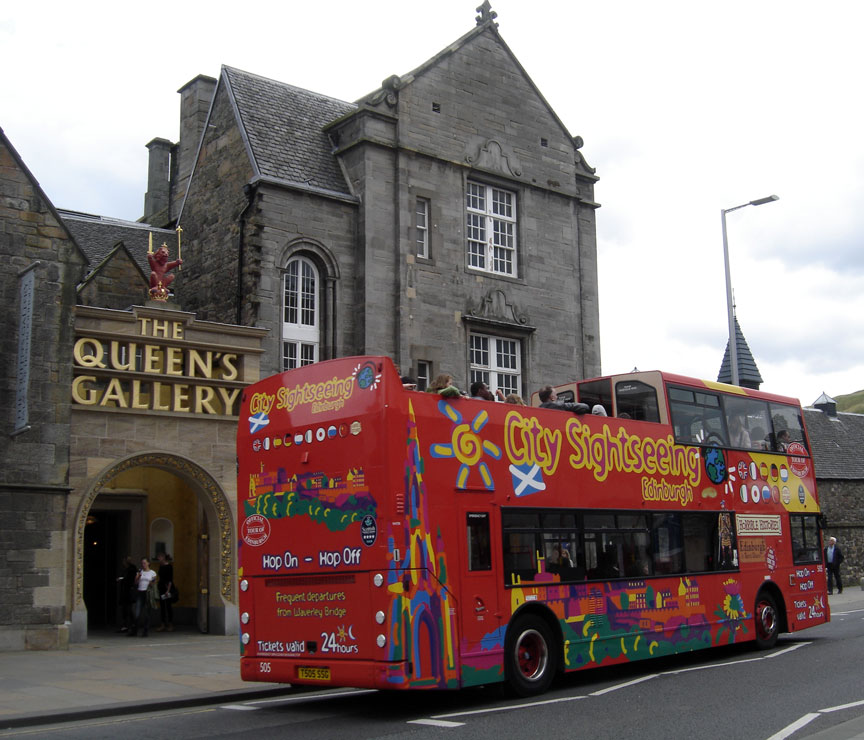
the sightseeing bus stops at the Queen's Gallery


Queen's Gallery
The short approach to the Palace of Holyroodhouse. On the north side; the ancient Abbey Strand lodging and the building once known as Lucky Spence's tavern, on the south side the Queen's Gallery and the remains of the gatehouse of Holyrood Palace built by James IV, with the coat-of-arms of James V set in the wall.

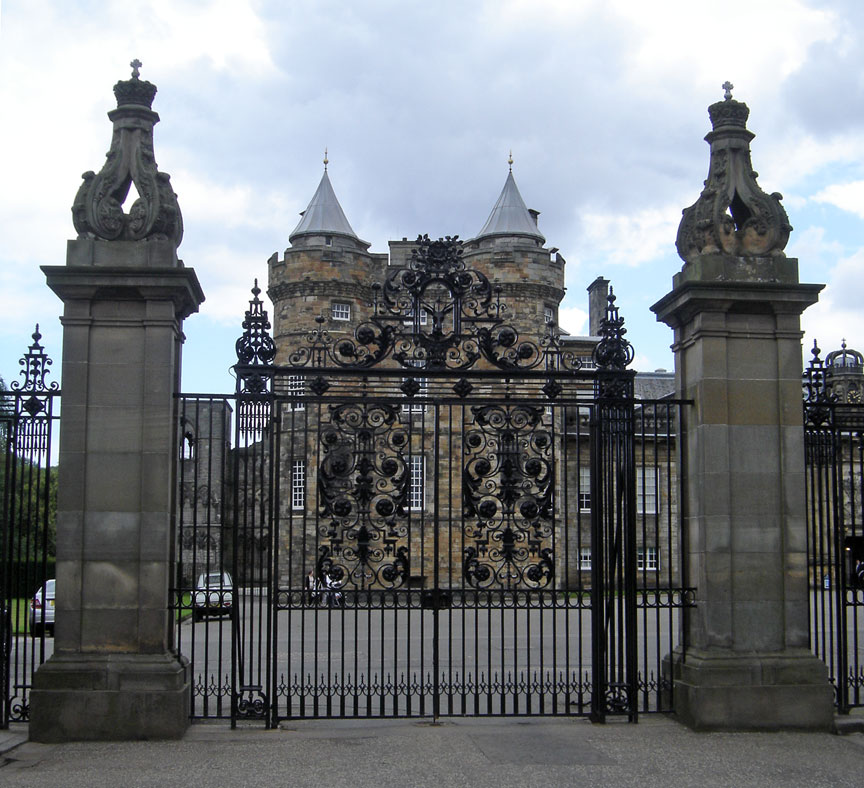

Palace of Holyroodhouse



Today, the Royal Mile is an eclectic mix of tourist shops and eateries as well
as pubs and historical attractions, as well as forming a major focal point for
the annual Edinburgh Festival. It also serves as the heart of Scotland's legal
system, being the home of both the High Court of Justiciary and the Court of
Session.
Text from Wikipedia

Scottish Parliament


